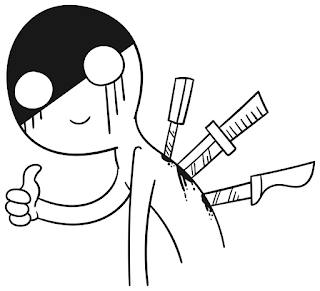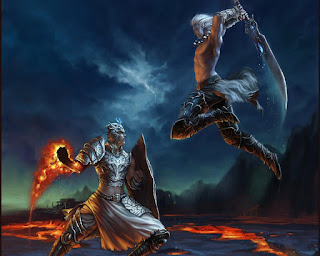28 December 2019
Screwage: 'Take That' Mechanics in Games
Veteran board gamers are familiar with the concept of 'take that' mechanics. The idea is that players take actions in a game that are intended to be harmful to another player's plans, or ability to score points, or otherwise be detrimental to that player.
This is not the same thing as working to achieve victory yourself. Some games operate in a directly antagonistic manner. Games that involve combat, or have area control mechanics, like Risk or Axis and Allies, do not count as 'take that' games. Rather, 'take that' mechanics are specifically about hampering other players' abilities to take action in a game, as opposed to gaining an advantage for yourself even if that advantage serves as a detriment to other players.
The various Munchkin games are great examples of 'take that' mechanics; aside from the many cards that can be played which will prevent an opponent from winning a combat, there are cards that reverse an action that was just taken (for example, there are cards that you can play when you are helping another player which will cause your assistance to benefit the monster that the other player is fighting instead of benefiting the player you're supposedly helping).
21 December 2019
Board Game Review: Decrypto
One of the new games I got to try at Geekway this past May was an interesting game called Decrypto. John's daughter discovered it, and insisted that she and her friend play it with me and John. It was a fun game, and I bought a copy so that the Dork Spouse and I could play it with our friends Gemma and Caroline. So I think I should review it for you now.
Decrypto, by Thomas Dagenais-Lespérance and published by Le Scorpion Masqué and Iello, is a teams game in which you want to communicate a code number to your teammate(s) without the rival team discerning the number.
Let's start with the usual numbers:
14 December 2019
PinkFae Archive #54: How to GM Part 9: Handling Player Conflict
This is the final entry in the PinkFae Archives. It is also the final entry in the 'How to GM' series. It was originally published on 18 February 2017.
Player conflict is a problem that all GMs must face at least once in their life. It may result from any number of causes. But regardless of the cause, it can result in a total disintegration of the gaming group. Even if everything else is going well, two players (or their characters) being antagonistic towards one another can ruin the game for everyone.
Ideally, you'll be able to assemble a group that gets along well enough that this won't be an issue. But sometimes, no matter what you do, two people may develop an insurmountable conflict in the course of playing. Even worse, a disconnect may arise between a player and you, the GM. How do you handle this situation?
In today's entry, we'll look at ways to minimise potential player conflict, and how to handle it when it does happen. Whether vetting potential players or mediating between players once the game has started, there are always ways to avert this possible crisis.
Player conflict is a problem that all GMs must face at least once in their life. It may result from any number of causes. But regardless of the cause, it can result in a total disintegration of the gaming group. Even if everything else is going well, two players (or their characters) being antagonistic towards one another can ruin the game for everyone.
Ideally, you'll be able to assemble a group that gets along well enough that this won't be an issue. But sometimes, no matter what you do, two people may develop an insurmountable conflict in the course of playing. Even worse, a disconnect may arise between a player and you, the GM. How do you handle this situation?
In today's entry, we'll look at ways to minimise potential player conflict, and how to handle it when it does happen. Whether vetting potential players or mediating between players once the game has started, there are always ways to avert this possible crisis.
07 December 2019
PinkFae Archive #53: Board Game Review: Power Grid
In this, the penultimate entry from the PinkFae Archives, we have the last board game review I wrote for that site. It was originally published on 11 February 2017.
In my quest to play eighty of the top 100 board games, I have finally been able to play Power Grid. I first heard of this game when I read the Cracked article 6 Board Games that Ruined It for Everyone. That article lists Monopoly as the worst board game of all time. Perhaps it's only fair to say it's the worst widely known board game of all time. But the article goes on to recommend Power Grid instead. The article states:
Let's look at some ratings:
In my quest to play eighty of the top 100 board games, I have finally been able to play Power Grid. I first heard of this game when I read the Cracked article 6 Board Games that Ruined It for Everyone. That article lists Monopoly as the worst board game of all time. Perhaps it's only fair to say it's the worst widely known board game of all time. But the article goes on to recommend Power Grid instead. The article states:
Power Grid is everything Monopoly should have been. You're genuinely aiming to build a monopoly, earning ever-increasing fountains of money, but you still have to spend every cent to stay ahead of the competition.I've only been able to play once, but I already know I need to own a copy for myself. Let me explain why.
Let's look at some ratings:
Subscribe to:
Posts (Atom)








